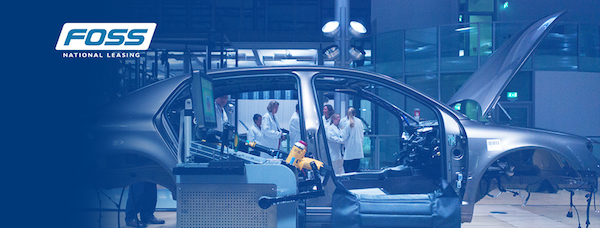Vehicle Ordering Best Practices
Making the most of your vehicle selection and replacement timing is essential. Jennifer Chapman, Foss National Leasing, shares some best practices for managing this crucial aspect of optimal fleet management.
Don’t let the state of your current vehicles solely dictate your replacement timing. Instead, make vehicle replacement a conscious business decision. Your replacement strategy should take seasonal remarketing values into account. It should also address whether you’ll order from a factory or dealer inventory. No matter the size of your fleet – from 10 to 1,000 – there’s a significant opportunity for savings when you factory order your vehicle replacements, instead of buying from stock.
Advantages of Factory Ordering vs Buying Dealer Stock
- Get the exact vehicle you require, not just the best of what’s available
- Order the vehicle for a delayed delivery, so you get it when you want or need it (depending on OEM build scheduling)
- Have a better chance of allocation from the OEM when you order early in the model year
- Get vehicles delivered directly to where your drivers are located
- Receive Ship-Thru capability for upfitting
- Get locked-in pricing from the date your vehicle was ordered
- Enjoy lower dealer markup and acquisition fees when compared to stock inventory
Studies have shown that the average vehicle purchased out of dealer inventory will cost $750-$1,000 more than a factory order for the same driver requirement.
But timing and sourcing aren’t the only issues to think about; Total cost of ownership and fit for purpose analyses are also critical to your vehicle replacement process. Your total cost of ownership should always include:
- vehicle cost and projected resale value to calculate depreciation
- cost of fuel consumption
- energy and charging station costs (if you have electric vehicles)
- preventative maintenance
- insurance
- interest
- program fees and licensing
To maximize resale value, equip your vehicles with the technology and safety features that used car buyers will expect to see in three-to-four years. Think about what you might want as a consumer now in your vehicle—connected mobility, automatic braking etc— and then think back to your buying decision three years ago. Did you include those in your vehicles’ required options? Being proactive when deciding on options will boost resale value and thus your business’ return on investment.
In Canada, there’s another piece of the ordering puzzle that requires careful and considerate planning: allocation and availability.
Our fleet size here is only ten percent of that of our U.S. counterparts, and our allocation for fleet vehicles reflects that size differential. Add to this factors you can’t predict, such as major weather events, forest fires, and overall demand for trucks in the U.S. These have all played a role in why finding light duty commercial vehicles has been such a challenge in the 2019 model year.
Even if your business is a large commercial vehicle player here in Canada, when compared to those in the U.S. that are competing for the same allocation, an OEM won’t cater to the ten percent in Canada, and make the other 90 in the U.S. wait. That’s why, if you order later in the model year, you might be unable to get the vehicles you need allocated in time.
In addition, it’s becoming common to experience shorter and shorter ordering cycles from OEMs when placing your factory orders, while at the same time, experiencing longer lead times for delivery. What used to be a six-to-ten week delivery time frame—a norm for many domestic OEMs just five years ago—is likely now a staggering three-to-six month wait, for almost any vehicle coming into Canada.
So, forecasting your replacement needs and projected new acquisitions is now more important than ever.
Add to this that 75 percent of all new cars and trucks—over 1.8 million freight railcar loads in 2017 alone— are shipped by rail at some time in their delivery process. Factors like railcar shortages and labour disruptions can intensify this already extended order-to-delivery timeframe.
So, with all this flux, how can companies get around longer lead times and availability issues?
One option FNL recommends to our customers is a short term lease solution like our Flex Lease option. Flex Lease allows you to place your new driver, perhaps one waiting for a factory order, into a hassle-free short term lease vehicle for one-to-six months. This ensures that your driver is in a fleet-ready vehicle with flexible mileage that is both delivered to them directly, and at a competitive rate, while the order is being produced by the OEM.
It goes without saying that planning your replacements as early as possible is ultimately the best way to ensure you have the vehicles you want, when you need them. Working with your fleet management partner now, and communicating consistently will help ensure that your 2020 vehicles are there waiting to do the job you need them to do.
Source: https://www.fleetbusiness.com
FLEET MANAGEMENT NEWSLETTER
Join to our NEWSLETTER; you’ll get the latest news, articles, publications, training, conferences, events, congresses, and white papers related to Fleet Management, Mobility and Automotive IN your email fortnightly.




